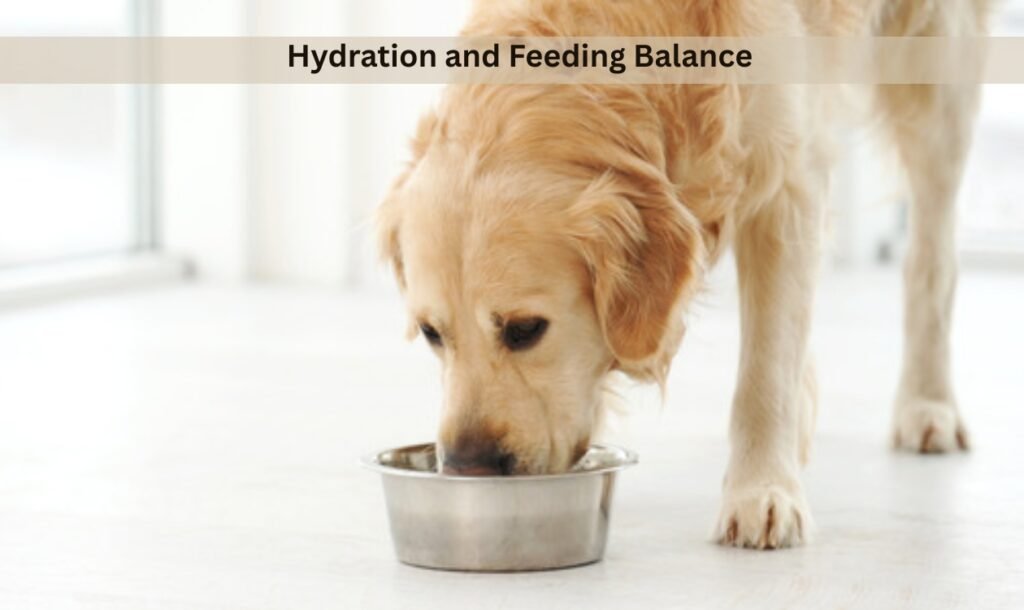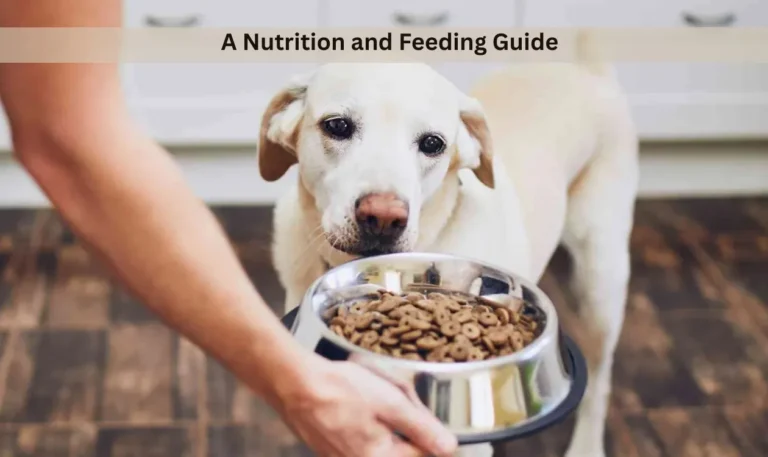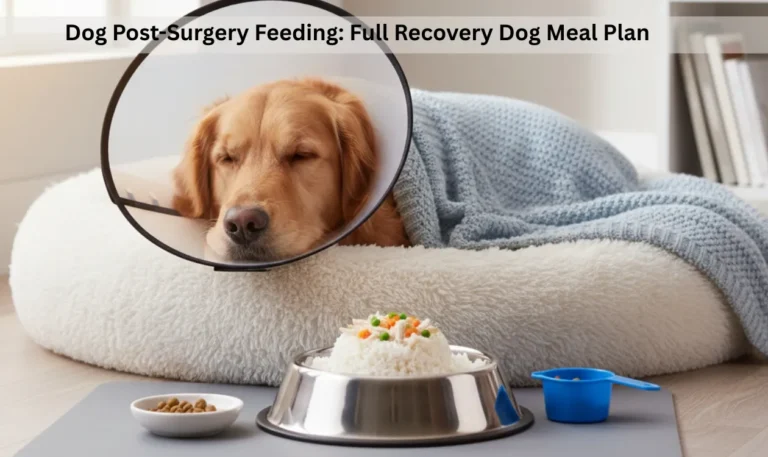Eating Schedule During Recovery: The Ultimate Guide
Discover the best eating schedule during recovery with this complete guide, featuring meal timing, nutrition tips, and foods that support faster healing and energy
The postoperative period must be followed by special attention and balanced nutrition of your dog to heal. A feeding schedule during the recovery period will help to properly feed your pet with the appropriate nutrients in the appropriate time without overworking the digestive system. Smaller and frequent meals will keep energy levels active and enhance quicker healing.
Correct feeding schedule is a way of not only helping your dog get better physically but is also a way of balancing the appetite and the digestive comfort of your dog. The trick lies in consistency, feeding at regular intervals, giving soft enriched food and keeping a check on their thirst and food receptiveness.
Why a Feeding Schedule Matters After Surgery
Dogs within the recovery period may experience lack of appetite, fatigue, or nausea. An organized eating plan helps encourage them to consume small portions at frequent intervals to restore energy and immunity. Regulated eating schedules also prevent gluttony, swelling, or stomach discomfort, while homeostasis supports a stable and smoother healing process.
Regularity also helps in the digestive rhythm so that the body is able to take basic nutrients effectively. There is sufficient energy in the course of the day with a good feeding schedule, which would keep one not weak and help in repairing the tissue after surgery.
How to Start a Feeding Routine After Surgery
The initial 24 hours of post-operative period are critical. Your vet can advise you to delay meals some few hours until anesthesia subsides. After your dog has woken up, do not give a lot of food, but a little in order to test appetite. Provided that it is tolerated, then light meals should be continued during the day.

Eat in small portions (3-4 times a day) rather than in large ones (1-2 times a day). Slowly add up with the restoration of energy in your dog. Do not change the diet suddenly, it makes digestion and appetite recovery more stable.
Choosing the Right Food During Recovery
Foods that are soft and easy to digest should be taken during recovery. The stomach can be soothed with boiled chicken, rice, pumpkin, and plain yogurt, all of which provide essential nutrients. Wet or canned dog food that is gentle on digestion can also be beneficial. Including such nutritionally-therapeutic options helps support smoother healing and steady energy levels.
It is best to avoid fatty, spicy or processed food which can upset the stomach. Select the good sources of proteins and add a portion of a fiber to digest. You can always use the vet-approved alternatives depending on the stage of recovery of your dog.
Timing and Portion Control
Smaller, frequent meals avoid the pressure on the digestive system and maintain a stable level of blood sugar. To begin with, divide the daily food of your dog into 3-5 portions of the same. Eat every 3-4 hours so that the supply of nutrients is constant.
Excessive feeding may lead to vomiting or discomfort, hence adhering to prescriptions. Monitor the eating habits and bowel movements of your dog, the two are excellent signs of gut health in recovery.
Hydration and Feeding Balance
Recovery is dependent on hydration. Fresh clean water should always be given but without coercing people to consume a lot of water simultaneously. Low sodium broth can be added to the meal to make sure that there is an increase in the amount of water consumed.

Wet food, such as canned meals or moist kibble, helps keep dogs properly hydrated. Adequate fluid balance supports the kidneys in maintaining functional recovery, transporting nutrients, and regulating body temperature. Ensuring proper hydration also promotes physiological stability, which is vital during the healing phase.
Signs of Overfeeding or Underfeeding
Bloating, diarrhea and slow behavior may occur as a result of overfeeding. In case the stomach of your dog swells or the dog seems to be in pain, then give it a little less to eat. On the other hand, underfeeding can lead to fatigue, weakness or even to weight loss.
Frequent weight monitoring and body status check up can provide earlier detection of problems. Take things in small steps, radical changes may overwork the digestive system and slow down the recovery process.
Feeding Schedule for Different Recovery Stages
The first week should be devoted to soft, low-key food in small amounts. Feed four to five times per day to stimulate the digestive system and avoid nausea. Your dog may have an up-and-down appetite during this period, so patience is key. Proper dog care during recovery includes gentle feeding routines and observing how your dog responds to each meal.
During the second and third weeks, when recovery has already begun, it is possible to resume consuming somewhat firmer foods, as well as to decrease the feeding frequency to three times daily. The combination of proteins and vitamins is the key to maintaining a healthy balance in the meals offered so as to feel fit.
Incorporating Supplements in the Feeding Plan
Omega-3 fatty acids, probiotics, and vitamins C and E are examples of supplements that may support tissue repair and strengthen the immune system. However, it is essential to consult your vet before introducing any supplements to ensure you are giving the correct amount and that each addition is compatible with your dog’s diet. This careful approach helps avoid contraindications, which can affect recovery.
Use natural sources wherever possible, fish oil, pumpkin or bone broth will help improve recovery in a natural way. Remember that too much supplementation is harmful because occasionally it takes too long to heal.
Homemade vs. Commercial Diet During Recovery
Home cooked meals are fresh and ensure one is in control of the ingredients, which are favorable to sensitive digestion in the aftermath of surgery. Balanced and healing meals can be made with lean proteins, vegetables and whole grains.
Nevertheless, in the case of limited time, commercial recovery diets of high quality will also be a good choice. Find the recommended formulas that are made by vets that are called digestive care or recovery support. The two methods may be useful in certain situations.
Reintroducing Regular Food
As soon as your dog is up and running again, and hungry, resume with his regular food slowly. Combine recovery meals in small proportions with normal food, and over 5-7 days, the proportion should be greater.
Such a transition will avoid intestinal discomfort. Keep checking on allergies, vomiting, and alterations of stool and change the speed of transition accordingly.
FAQs: Eating Schedule During Recovery
Conclusion
The healing process of your dog depends on a well-organized feeding plan in the course of rest. Through the provision of small, frequent and balanced meals, you give the body the food that it needs to be strong, energetic, and repair tissues.
Always feed on soft digestible food, keep it hydrated and observe the behavior of the dog. Being patient, loving, and constant, your pet can be cured very fast and will become again an active, playful child.






